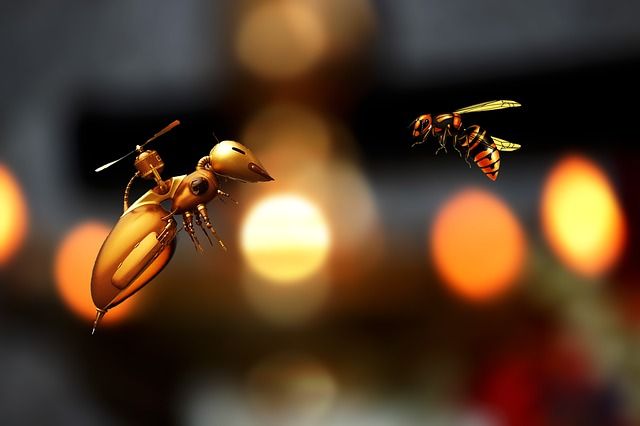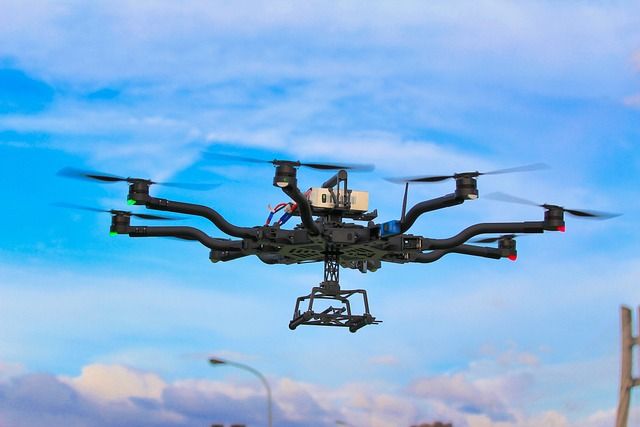What Does the Future Hold for Drone Technology?
Where is drone research and design heading?

The design and production of drones, in its infancy for the last twenty years, is finally maturing into a burgeoning, specialized, and highly profitable industry. By providing practical and cost-effective solutions to other parts of the economy, drone manufacturing has become an industry with a great deal of government and public support.
But where is the drone sector heading and what does its future hold?

When the United States Federal Aviation Administration (FAA) approved hundreds of new exemptions for businesses to use drones in 2016, the drone industry literally took off.
Since then, the use of drones in all manner of industries, as well as military and personal/hobby use has grown considerably, such that industry insiders predict global drone sales of 2.4 million in 2023 – an expansion of 66%. Sales in the US alone surpassed $1.25 billion in 2020, with Goldman Sachs forecasting the total drone market size to be worth in excess of $100 billion.
Military Use
Drones or more precisely, Unmanned Aerial Vehicles (UAVs), have played a key role in the war in Ukraine. They have been incredibly influential in a surveillance role, while also delivering small payloads, or taking an active role in firing weapons and dropping grenades. Their success is leading the US military to develop what it terms ORBs (autonomous or semi-autonomous small-to-medium sized manned and unmanned aerial systems).
The drone industry is already giving a small indication of where the future lies for military use with the Loyal Wingman, a semi-autonomous assistant to accompany traditional military aircraft.

They are relatively cheap, pilotless aircraft with enough aerial performance to accompany jet fighters and the artificial intelligence needed to support them. Without a weak human pilot (trained at a cost of up to $10 million), they can manoeuvre much quicker, like a plane in a video game. This means that they even have the chance to win dogfights against piloted jets. By flying out ahead of crewed aircraft they can extend surveillance range, whilst still carrying a weapons compartment with guns and missiles for self-defence or to conduct attacking raids.
The Loyal Wingman is currently undergoing trials and is being developed by Boeing in Australia, with a large quantity on order for the US military.
Underwater drones are also being developed which can carry torpedoes, hunt submarines, or be used to track and follow enemy ships.
Exploration Use
Drones have already been used for exploration of volcanoes, as well as unmanned underwater vehicles for exploring the deepest oceans and underwater caves.
But drone use is now also planned for space, with NASA hoping to build them for use on Mars or in future missions to the moons of Jupiter.
Raw Materials for Drones
Due to its low weight and good strength, carbon fibre is the current go-to material for drone production, however the emergence of nanotechnology is set to have drone manufacturers re-thinking their input feedstocks.
Nanomaterials, such as carbon nanotubes, are an excellent raw material for strengthening conventional feedstocks such as plastic, epoxy resin, or carbon fibre, as they can provide properties such as added strength and electrical conductivity at an exceptionally low input volume (often as low as 0.5% wt.).

Nanomaterials are already widely used in the automotive and aerospace industries, as they offer the strength and durability previously provided by metals without increasing weight.
To learn more about nanotechnology’s influence on the automotive and aerospace sectors read: Why the Automobile Industry is Embracing Nanotechnology or Carbon Nanotubes Create Cheaper Production of Strong Composites.
Nanomaterials and nanotechnology are also vital for the development of drone swarms.
Drone Swarms
Current weather forecasting technology sends a balloon high into the sky to read air pressure, wind conditions, and humidity, but only from a single space. But imagine the data set collected from a swarm of thousands of drones, each the size of pea.
Sent into the atmosphere or other area of scientific interest to collect information a drone swarm could collect from a million different data points and give a much larger picture of something as complex as weather patterns, providing the big data that modern computer modelling can handle.
Drone swarms could also be highly effective for military use as they would be exceedingly difficult to destroy – much like trying to kill a swarm of bees. In this way, a swarm of tiny drones flying above no-man’s land could function as an electronic blanket to block enemy radio communications, mask military manoeuvres, or impair radar capabilities.
As yet, drone swarms are not possible beyond the scale used in light displays. But as nanotechnology progresses, the capability for ever smaller electronics, with autonomous computing, the ability to guide the swarm en masse, and for nanoscale sensors, antennae, and receivers will make swarm drones a possibility.

No one could imagine what the Internet would become in its early years, and so too no one can tell what course drone design and production will take.
However, given the opportunities that drone users have already found for flying cameras, flying sensors, and unmanned exploring aircraft, it is likely that manufacturers and designers have a long way to go before their story is fully told.
Photo credit: Marian anbu juwan from Pixabay, DJI Agras, Tayeb MEZAHDIA, HUNG LIANG CHEN, & Freepik

